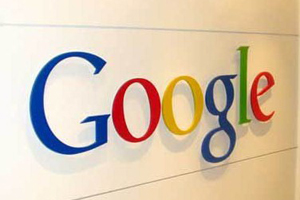Developers must rethink apps for the Wi-Fi world
As it previewed its Android mobile platform and Chrome browser British developers, Google outlined its vision of cloud computing and wireless application development.

Whether your users are working with laptops, netbooks, desktops or mobiles, developers need to rethink the way they build applications and the tools they use to do it.
That was the main message Google left developers with on the London leg of its developer tour of the UK, which took place today at West London's Wembley Stadium.
"There has been an explosion in wireless use and developers need to rethink the way they write their applications and deliver those applications to users," said Tom Stocky, the Google App Engine product manager.
Google is promoting a development model it calls Client Cloud Connectivity, based on cloud computing and making use of Google's APIs, development toolkits and deployment methodologies. It is also pushing platform-agnostic development, not based on the concept of working across OS, but rather working across the myriad of different browsers regardless of device or client application platform.
The company is heavily marketing both its own-brand web-based applications for consumers and businesses, as well as its underlying API and hosting resources to enable developers to create their own cloud computing applications.
Widespread access to wireless broadband is, according to Google, making cloud computing applications not only more practical, but more expected by users, as reflected in the devices appearing on the market that enable access to wither Wi-Fi networks or high speed cellular data networks.
In demonstrating the Google Web Toolkit, the company is hoping to woo developers with features such as compile-as-you-type and intelligent coding solutions to help people write AJAX applications.
Get the ITPro daily newsletter
Sign up today and you will receive a free copy of our Future Focus 2025 report - the leading guidance on AI, cybersecurity and other IT challenges as per 700+ senior executives
"If you've ever hand written an AJAX application, you will know the kind of hell you walk into in trying to debug it," added Sumit Chandel, a developer programs engineer at Google.
Alongside the developer tools push, Google also talked about its involvement in OpenSocial.
"Open Social is about making it easier for developers to build social networking tools. It started out as a bunch of shared APIs among a number of social networking web sites, but in terms of reach, its growing rapidly, with sites including MySpace and Friendster involved," said Stocky.
He added that the way social networking is evolving, its very similar to the way the web itself grew up. It's very much a user-driven and user networking exercise.
-
 CyberOne appoints Microsoft’s Tracey Pretorius to its advisory board
CyberOne appoints Microsoft’s Tracey Pretorius to its advisory boardNews The threat intelligence leader will provide strategic guidance to CyberOne’s executive team
By Daniel Todd
-
 CISA issues warning in wake of Oracle cloud credentials leak
CISA issues warning in wake of Oracle cloud credentials leakNews The security agency has published guidance for enterprises at risk
By Ross Kelly